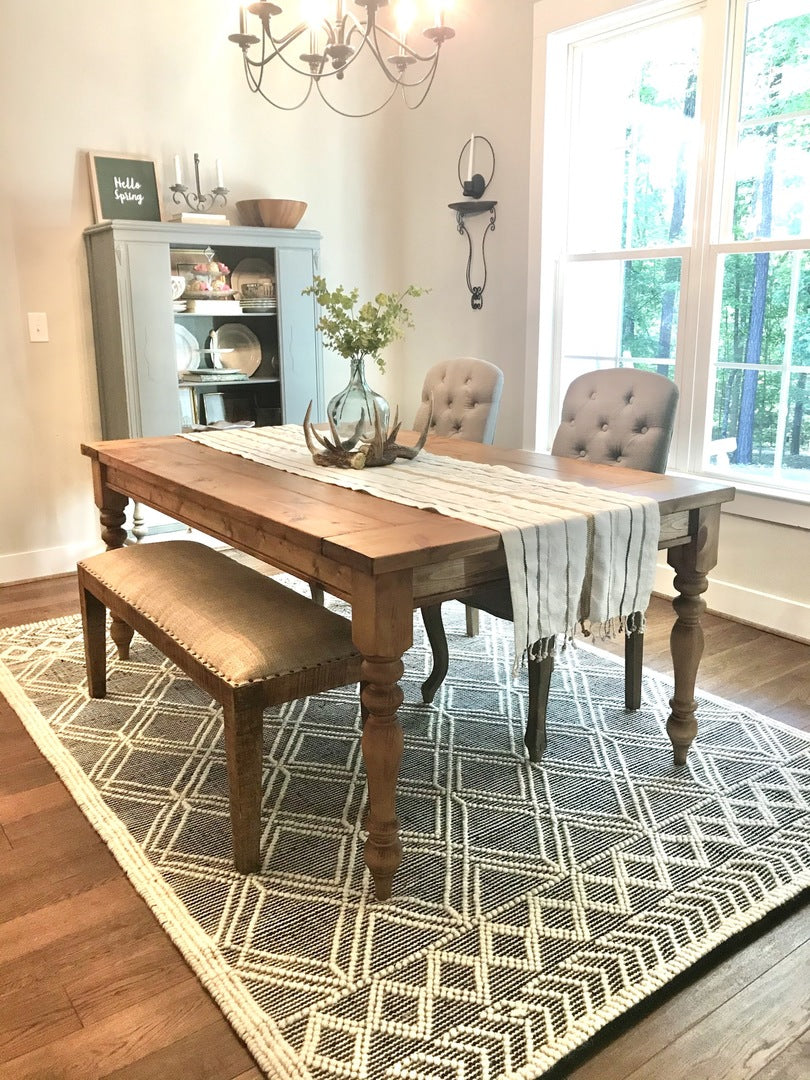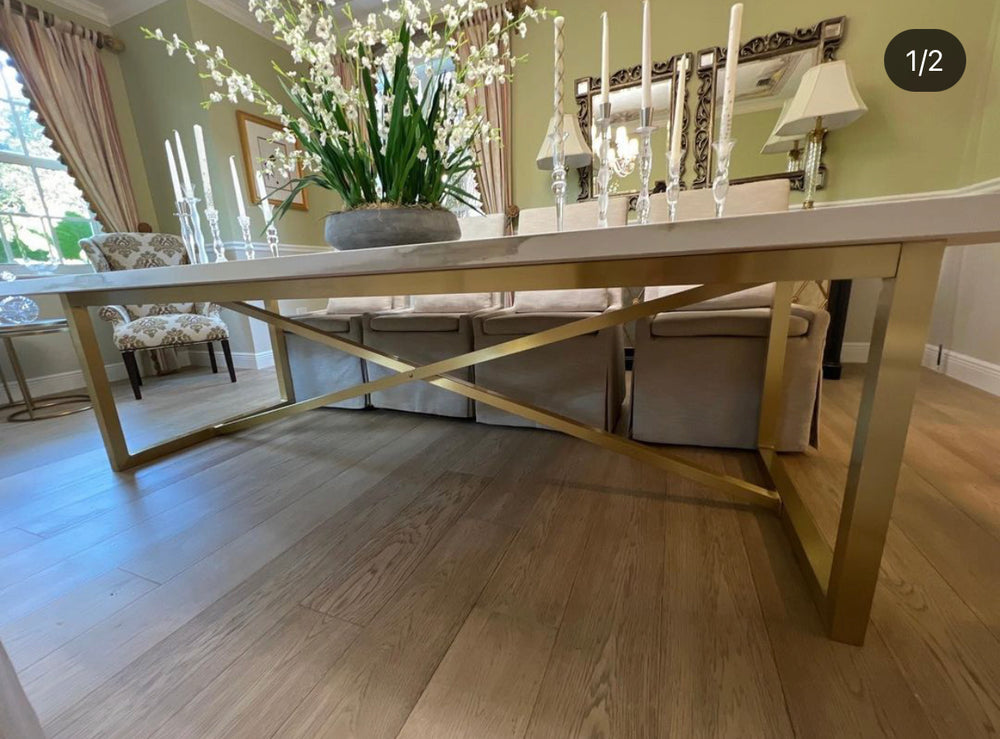Just How to Select the Perfect Dining-room Table Legs for Your Home Design
Choosing the suitable eating room table legs is a nuanced process that calls for mindful factor to consider of numerous aspects, including your space constraints, aesthetic choices, and sensible requirements. The interplay between dimensions, products, and styles can considerably influence the setting of your eating area, making it crucial to approach this choice methodically.
Assess Your Eating Room
Examining your dining room is critical for picking the right table legs that match both aesthetic appeals and functionality. Begin by gauging the dimensions of your dining location, consisting of ceiling height, flooring space, and distance to various other furnishings. This details will certainly help establish the proper dimension and elevation of your table, which straight influences the option of table legs.
Following, consider the design and format of your dining area. An open-concept design may profit from table legs that offer visual lightness, such as slim metal or acrylic alternatives. Conversely, a much more typical setup could call for sturdy wooden legs that offer a sense of durability.
Examine the existing color combination and materials in your eating location. Harmonizing the table legs with these elements develops a cohesive look that enhances the overall design.
Ultimately, a complete analysis of your eating room will certainly assist you in making an educated choice, making sure that your table legs not only enhance the aesthetic allure yet likewise serve practical purposes.
Consider Your Design Preferences
When choosing dining area table legs, it is vital to assess your personal design choices, as they considerably affect the general visual of your eating space. Your choice of table legs can either complement or contrast with existing décor, making it critical to straighten them with your favored interior decoration style.
If your home leans towards a modern aesthetic, consider smooth metal or minimal wooden legs that give a tidy, uncluttered appearance. For a more conventional technique, ornate wood legs with detailed makings can add a touch of elegance and sophistication. Industrial styles take advantage of robust, resources such as redeemed timber and metal combinations, showing a tough beauty.
Additionally, farmhouse and rustic styles often favor tough, beefy legs that evoke a sense of heat and convenience. Conversely, if your décor is diverse, you may choose unconventional forms or a mix of products to produce visual passion.

Evaluate Product Options
The option of material for eating space table legs plays an essential role in both durability and aesthetic charm. Common products include wood, metal, and composite options, each offering unique characteristics that can influence the overall look and long life of your table.
Wood is a classic choice, recognized for its heat and flexibility. Hardwoods like oak and walnut provide extraordinary strength and can be finished in different spots to match any design. However, softwoods like ache are much more prone to scratches and damages, making them much less perfect for high-traffic areas.
Metal legs, frequently crafted why not try this out from steel or aluminum, radiate modernity and industrial appeal. They are resistant and extremely long lasting to wear, making them appropriate for family members with children or constant events (dining room table legs). Additionally, metal can be ended up in different colors, enhancing the modification opportunities
Composite products, such as MDF or laminate, deal affordability and varied designs. While typically less sturdy than strong wood or metal, they can still supply a stylish look and are often simple to maintain.
Ultimately, the material you select ought to align with your lifestyle, aesthetic preferences, and the degree of use your dining table will certainly experience.
Determine Height and Dimension
Choosing the suitable height and dimension for your dining-room table is important for both performance and convenience. The typical elevation for eating tables generally varies from 28 to 30 inches, enabling enough legroom for a lot of people when seated. It is vital to consider the measurements of your eating space and the kinds of chairs you intend to use.

Furthermore, consider the percentages of your eating room. A larger table in a sizable location can produce a grand atmosphere, while a smaller sized table functions well in more intimate settings. Inevitably, the appropriate height and size will harmonize with your general style and improve the eating experience for you and your visitors.
Explore Customization Opportunities

Furthermore, the layout of the legs can be customized to fit numerous designs, such as rustic, contemporary, or commercial. Tapered legs can evoke a mid-century contemporary feeling, while beefy, block-style legs may reverberate with Click Here standard or farmhouse design.
Home owners can likewise explore color surfaces, from all-natural timber discolorations to repaint, enabling them to match or contrast with the tabletop and bordering style.
In addition, leg height can be changed to suit specific seating arrangements or individual choices, boosting both convenience and functionality.
Lastly, special decorations, such as carvings or attractive braces, can even more individualize the table legs, making the eating experience not just a meal but a statement item in the home. By thinking about these customization alternatives, home owners can create a dining space table that genuinely shows their originality.
Final Thought
Selecting the perfect eating space table legs needs careful consideration of different variables, including the dimensions of the eating room, design choices, material resilience, and desired elevation. Modification choices better enhance the capability to attain a natural aesthetic that enhances the overall decoration. By systematically assessing these elements, property owners can ensure that the picked table legs not only fulfill functional demands yet also contribute favorably to the eating experience and atmosphere of the home.
Selecting the optimal dining area table legs is a nuanced process that requires mindful consideration of different elements, including your area constraints, visual choices, and functional needs.Assessing your dining room is crucial for choosing the right table legs that match both looks and functionality.When figuring out dimension, measure the location where the table will be placed to guarantee it fits conveniently, permitting for at the very least 36 inches of clearance around the table for very easy activity. A larger table in a sizable location can produce a grand atmosphere, while a smaller sized table works well in more intimate setups.Selecting the ideal dining space table legs calls for cautious factor to consider of different factors, including the dimensions of the eating area, design preferences, product resilience, and preferred elevation.